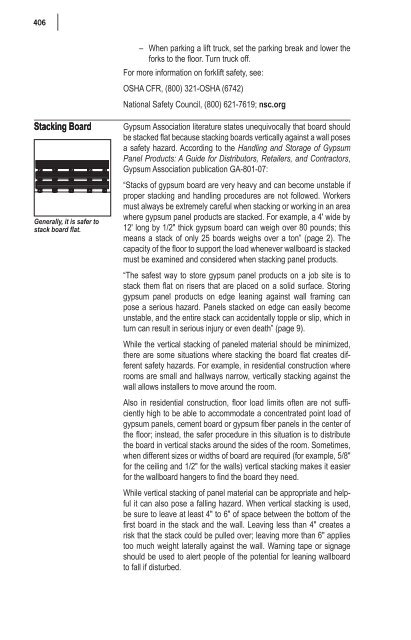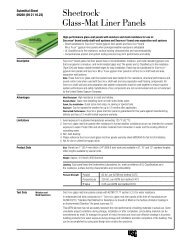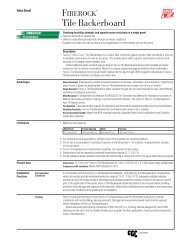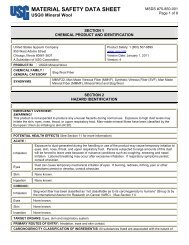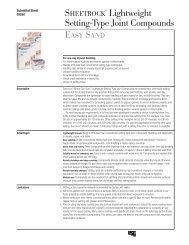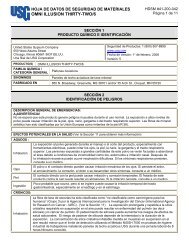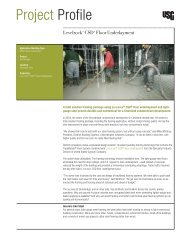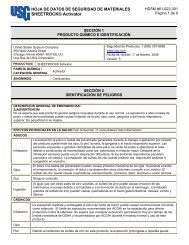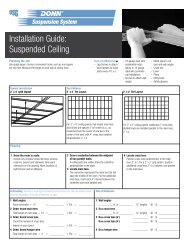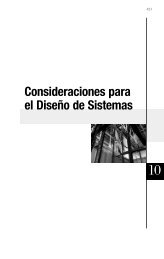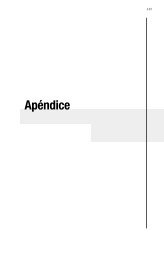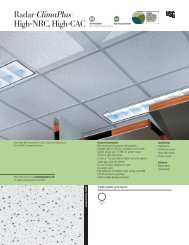13 Safety Considerations & Material Handling - USG Corporation
13 Safety Considerations & Material Handling - USG Corporation
13 Safety Considerations & Material Handling - USG Corporation
Create successful ePaper yourself
Turn your PDF publications into a flip-book with our unique Google optimized e-Paper software.
406 |<br />
Stacking Board<br />
Generally, it is safer to<br />
stack board flat.<br />
– When parking a lift truck, set the parking break and lower the<br />
forks to the floor. Turn truck off.<br />
For more information on forklift safety, see:<br />
OSHA CFR, (800) 321-OSHA (6742)<br />
National <strong>Safety</strong> Council, (800) 621-7619; nsc.org<br />
Gypsum Association literature states unequivocally that board should<br />
be stacked flat because stacking boards vertically against a wall poses<br />
a safety hazard. According to the <strong>Handling</strong> and Storage of Gypsum<br />
Panel Products: A Guide for Distributors, Retailers, and Contractors,<br />
Gypsum Association publication GA-801-07:<br />
“Stacks of gypsum board are very heavy and can become unstable if<br />
proper stacking and handling procedures are not followed. Workers<br />
must always be extremely careful when stacking or working in an area<br />
where gypsum panel products are stacked. For example, a 4' wide by<br />
12' long by 1/2" thick gypsum board can weigh over 80 pounds; this<br />
means a stack of only 25 boards weighs over a ton” (page 2). The<br />
capacity of the floor to support the load whenever wallboard is stacked<br />
must be examined and considered when stacking panel products.<br />
“The safest way to store gypsum panel products on a job site is to<br />
stack them flat on risers that are placed on a solid surface. Storing<br />
gypsum panel products on edge leaning against wall framing can<br />
pose a serious hazard. Panels stacked on edge can easily become<br />
unstable, and the entire stack can accidentally topple or slip, which in<br />
turn can result in serious injury or even death” (page 9).<br />
While the vertical stacking of paneled material should be minimized,<br />
there are some situations where stacking the board flat creates different<br />
safety hazards. For example, in residential construction where<br />
rooms are small and hallways narrow, vertically stacking against the<br />
wall allows installers to move around the room.<br />
Also in residential construction, floor load limits often are not sufficiently<br />
high to be able to accommodate a concentrated point load of<br />
gypsum panels, cement board or gypsum fiber panels in the center of<br />
the floor; instead, the safer procedure in this situation is to distribute<br />
the board in vertical stacks around the sides of the room. Sometimes,<br />
when different sizes or widths of board are required (for example, 5/8"<br />
for the ceiling and 1/2" for the walls) vertical stacking makes it easier<br />
for the wallboard hangers to find the board they need.<br />
While vertical stacking of panel material can be appropriate and helpful<br />
it can also pose a falling hazard. When vertical stacking is used,<br />
be sure to leave at least 4" to 6" of space between the bottom of the<br />
first board in the stack and the wall. Leaving less than 4" creates a<br />
risk that the stack could be pulled over; leaving more than 6" applies<br />
too much weight laterally against the wall. Warning tape or signage<br />
should be used to alert people of the potential for leaning wallboard<br />
to fall if disturbed.<br />
chapter<strong>13</strong>.indd 406 1/<strong>13</strong>/2009 10:36:31 AM


